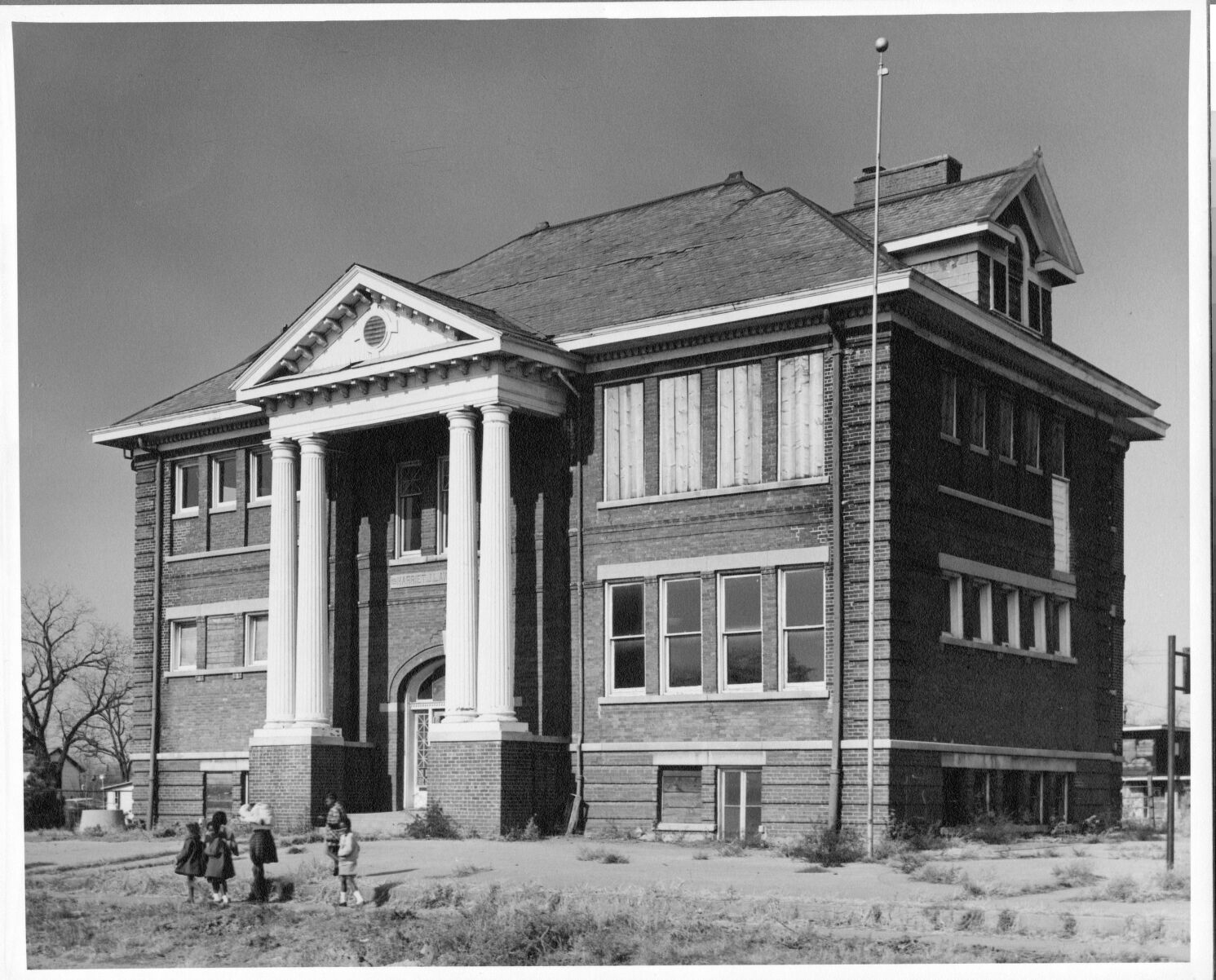Lawhead School
408 E. Grove St., Champaign, IL
Harriet J. Lawhead School, built in 1907, was a small, four-room building. During its early years, it served German and Italian immigrants in the neighborhood. As African Americans moved into the area, the school was integrated for a period of time, but by the 1940s it was attended only by Black students. White children who lived in the area were sent to Columbia School. During World War II, two rooms in the basement of the school were used as a Servicemen’s Club, organized by community members for African American soldiers who were not welcomed in the USO at Chanute Field. The school was closed in 1952, prior to the opening of the new Booker T. Washington School and razed in 1990. It is now a parking lot.
Mae R. Hawkins (1910-1983) was hired by the Champaign public school system in August of 1934, the first African American teacher hired in either Champaign or Urbana. According to the News-Gazette at that time, Miss Hawkins was hired to teach “colored students” exclusively at Lawhead School. A graduate of the Illinois State Normal University, she also attended the National Kindergarten School in Evanston, IL. Her salary was listed as $90.00 per month. She would eventually serve in the dual roles of teacher and principal of Lawhead School. Mary Frances Walden was a Champaign Unit 4 educator who was a student teacher of Miss Hawkins at Lawhead School and describes her as “a person of courage, compassion and commitment – a catalyst for all young people who knew her.”
Decade:
1900-1909
People:
- Harriet J. Lawhead
- Mae R. Hawkins
Location(s):
- Champaign, Illinois
Additional Champaign Trail Sites

